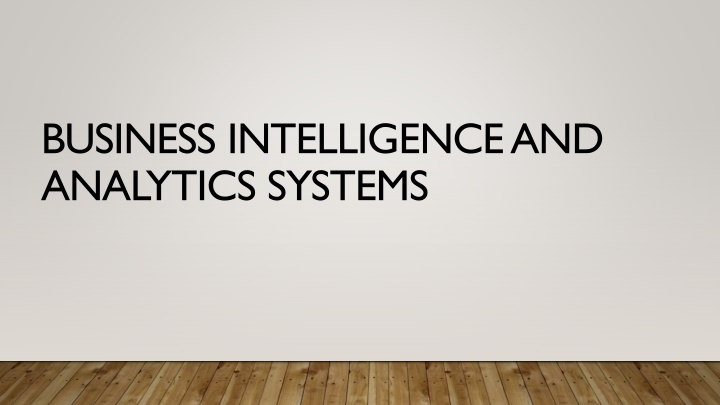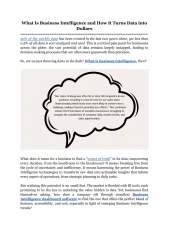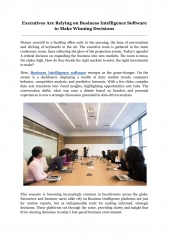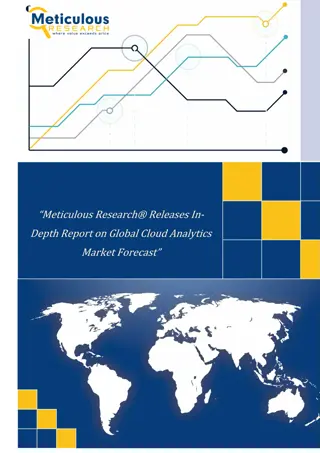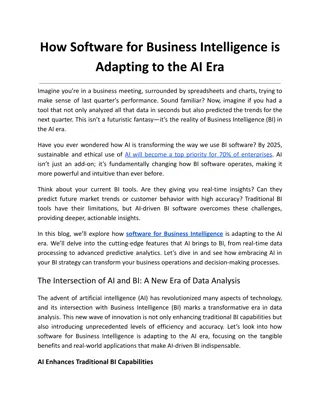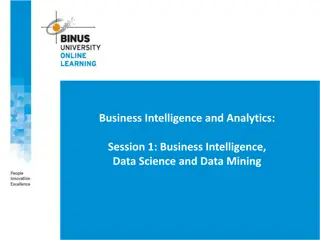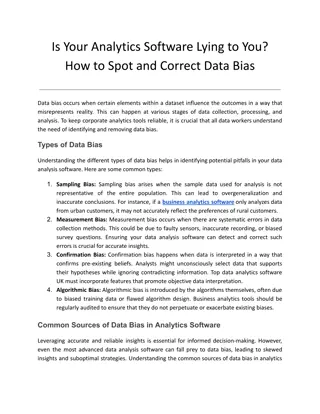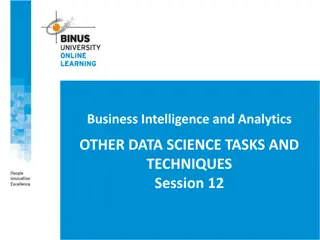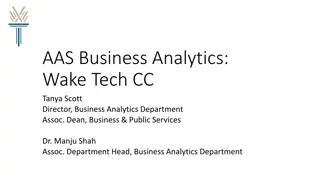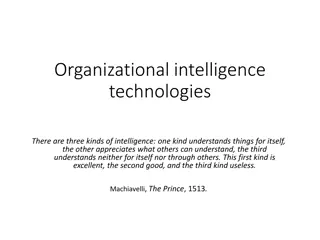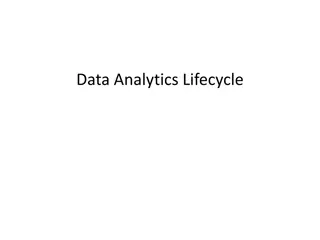Introduction to Business Intelligence and Analytics
Business Intelligence (BI) encompasses technologies, applications, and practices for gathering, integrating, analyzing, and presenting business information. It aids organizations in making informed decisions, improving performance, and gaining competitive advantages through various components like data warehouse, data mining, reporting, visualization, analytics, dashboards, and ETL processes.
Download Presentation

Please find below an Image/Link to download the presentation.
The content on the website is provided AS IS for your information and personal use only. It may not be sold, licensed, or shared on other websites without obtaining consent from the author.If you encounter any issues during the download, it is possible that the publisher has removed the file from their server.
You are allowed to download the files provided on this website for personal or commercial use, subject to the condition that they are used lawfully. All files are the property of their respective owners.
The content on the website is provided AS IS for your information and personal use only. It may not be sold, licensed, or shared on other websites without obtaining consent from the author.
E N D
Presentation Transcript
BUSINESS INTELLIGENCE AND ANALYTICS SYSTEMS
WHAT IS BUSINESS INTELLIGENCE? Business Intelligence (BI) refers to the technologies, applications, and practices for the collection, integration, analysis, and presentation of business information. It provides organizations with valuable insights to make informed decisions and improve performance
KEY COMPONENTS OF BI SYSTEMS Data Warehouse A central repository of integrated data from various sources. Data Mining The process of discovering patterns and trends in large datasets. Reporting and Visualization Presenting data in a meaningful and interactive way. Analytics Using statistical and mathematical techniques to analyze data and generate insights. Dashboard A visual display of key performance indicators (KPIs) and metrics. ETL (Extract, Transform, Load) The process of extracting data from multiple sources, transforming it into a consistent format, and loading it into a data warehouse
BENEFITS OF BI SYSTEMS Improved Decision Making BI systems provide timely and accurate information, enabling better decision making. Increased Efficiency Automation of data integration and analysis processes saves time and resources. Enhanced Data Quality BI systems ensure data consistency and accuracy through data cleansing and validation. Competitive Advantage Insights from BI systems help organizations identify market trends and opportunities. Risk Management BI systems enable organizations to identify and mitigate risks through data analysis. Improved Customer Satisfaction BI systems help organizations understand customer behavior and preferences, leading to better customer service
CHALLENGES IN IMPLEMENTING BI SYSTEMS Data Integration Integrating data from different sources can be complex and time-consuming. Data Quality Ensuring data accuracy and consistency across multiple systems can be challenging. User Adoption Encouraging employees to use BI systems and interpret data correctly can be a challenge. Security and Privacy Protecting sensitive business information and complying with data privacy regulations. Costs Implementing and maintaining BI systems can be expensive, especially for small businesses
REAL-WORLD APPLICATIONS OF BI SYSTEMS Sales and Marketing Analyzing customer data to identify target markets and improve marketing campaigns. Supply Chain Management Optimizing inventory levels, reducing costs, and improving delivery times. Financial Analysis Analyzing financial data to identify trends, forecast revenue, and manage budgets. Human Resources Analyzing employee data to identify performance trends, manage workforce planning, and improve recruitment and retention. Customer Relationship Management Analyzing customer data to improve customer satisfaction and loyalty. Operations Management Analyzing operational data to identify bottlenecks, improve efficiency, and reduce costs
FUTURE TRENDS IN BI AND ANALYTICS Artificial Intelligence (AI) AI-powered analytics systems can automate data analysis and provide real-time insights. Big Data Handling and analyzing large volumes of data from various sources will become more important. Predictive Analytics Using statistical models and machine learning algorithms to forecast future trends and outcomes. Data Visualization Interactive and intuitive visualizations will enhance data exploration and understanding. Cloud-Based BI Moving BI systems to the cloud will provide scalability, flexibility, and cost savings. Mobile BI Accessing and analyzing data on mobile devices will become more prevalent
